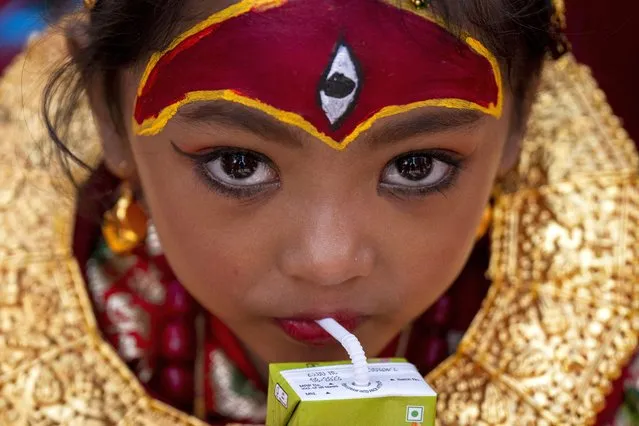
A young girl dressed as living goddess Kumari drinks juice as she waits for Kumari Puja, a worship ritual at Hanuman Dhoka, Basantapur Durbar Square, Kathmandu, Nepal, Wednesday, September 27, 2023. Girls under the age of nine gathered for the tradition of worshiping young prepubescent girls as manifestations of the divine female energy. The ritual holds a strong religious significance in the Newar community that seeks divine blessings to save small girls from diseases and bad luck in the years to come. (Photo by Niranjan Shrestha/AP Photo)
18 Oct 2023 02:21:00,post received
0 comments




